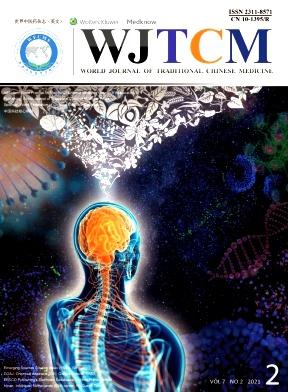Effect of salivary antimicrobial factors on microbial composition of tongue coating in patients with coronary heart disease with phlegm-stasis syndrome
IF 3.2
3区 医学
Q1 INTEGRATIVE & COMPLEMENTARY MEDICINE
引用次数: 1
Abstract
Objective: Phlegm-stasis syndrome is one of the most common traditional Chinese medicine (TCM) syndromes and found in 59% of patients with coronary heart disease (CHD) in routine TCM clinical practice in China. One of the diagnostic criteria of phlegm-stasis syndrome is its characteristic white-greasy and thin tongue coating. We have previously reported that different types of tongue coating have different microbiome characteristics that can be used as diagnostic markers. However, the microbial characteristics of tongue coating of CHD patients with phlegm-stasis syndrome, including coating feature and underlying reason of formation, have rarely been reported. Herein, we examined the characteristic microbiome of tongue coating, and discussed the cause of tongue coating formation via salivary proteins in patients with phlegm-stasis syndrome. Methods: We examined white-greasy and thin tongue coatings obtained from 10 patients with CHD having phlegm-stasis syndrome (n = 10), and compared with those of patients with almost no coating – patients with Qi-Yin deficiency syndrome (n = 10) – and healthy controls (n = 10). 16S rRNA sequencing of tongue coating microbiome and isobaric tags for relative and absolute quantitation (iTRAQ)-based quantitative analysis of salivary proteins were used to detect tongue coating and salivary protein separately. Salivary levels of sIgA, lysozyme, and amylase were detected by ELISA. Results: We identified Candidatus_Saccharimonas and Candidate_division_TM7_norank as the prominent members of tongue coating in patients with CHD having phlegm-stasis syndrome. Salivary proteins involved in biological processes, pentose phosphate pathway, and complement and coagulation cascades were among the differentially expressed proteins identified in patients with CHD having phlegm-stasis syndrome on iTRAQ analysis. Moreover, the formation of microbiota in tongue coating was associated with salivary sIgA, lysozyme, and saliva flow rate. Conclusions: We explored the characteristics of microbial composition of tongue coating patients with CHD having phlegm-stasis syndrome and identified correlations between salivary proteins and microbiome formation, providing a theoretical and mechanistic basis for tongue coating formation.唾液抗菌因子对冠心病痰瘀证患者舌苔微生物组成的影响
目的:痰瘀证是最常见的中医证候之一,在中国中医常规临床中,有59%的冠心病患者存在痰瘀证。痰瘀证的诊断标准之一是其白腻、舌苔薄的特点。我们以前报道过,不同类型的舌苔有不同的微生物组特征,可以用作诊断标记。然而,对于痰瘀证冠心病患者舌苔的微生物特征,包括舌苔特征及其形成原因,文献报道甚少。本文通过对舌苔特征菌群的研究,探讨痰瘀证患者舌苔形成的原因。方法:对10例冠心病痰瘀证患者(n = 10)舌苔薄、白腻,并与几乎无舌苔的气阴虚证患者(n = 10)和健康对照组(n = 10)进行比较。舌苔微生物组16S rRNA测序和基于iTRAQ (isobaric tags for relative and absolute quantitation)的唾液蛋白定量分析分别对舌苔和唾液蛋白进行检测。ELISA法检测唾液sIgA、溶菌酶和淀粉酶水平。结果:我们鉴定出Candidatus_Saccharimonas和Candidate_division_TM7_norank是痰瘀证冠心病患者舌苔的主要成员。通过iTRAQ分析,在冠心病痰瘀证患者中发现了参与生物过程、戊糖磷酸途径、补体和凝血级联的唾液蛋白差异表达。此外,舌苔微生物群的形成与唾液sIgA、溶菌酶和唾液流速有关。结论:我们探索了痰瘀证冠心病舌苔患者的微生物组成特征,发现了唾液蛋白与微生物组形成的相关性,为舌苔形成提供了理论和机制依据。
本文章由计算机程序翻译,如有差异,请以英文原文为准。
求助全文
约1分钟内获得全文
求助全文
来源期刊

World Journal of Traditional Chinese Medicine
Medicine-Complementary and Alternative Medicine
CiteScore
5.40
自引率
2.30%
发文量
259
审稿时长
24 weeks
 求助内容:
求助内容: 应助结果提醒方式:
应助结果提醒方式:


